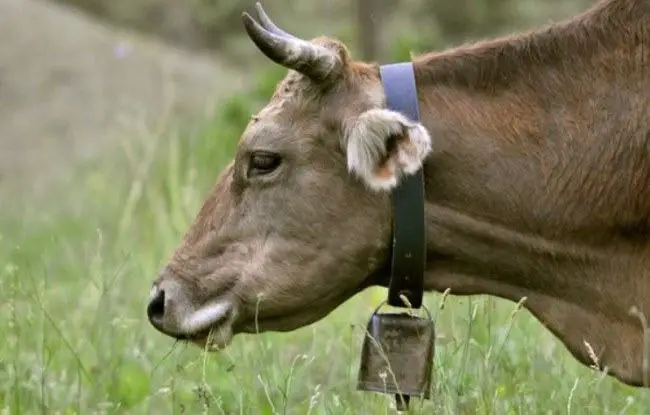No products in the cart.
Cow
Why Do Cows Wear Bells?
In many regions, cows are regularly equipped with bells. The bell has such a close-knit relationship with farming, culture and humans. If you are curious to know: “why do cows wear bells?” read on to have a deeper understanding of cowbell and other fun facts about them.
*This post may have affiliate links, which means I may receive commissions if you choose to purchase through links I provide (at no extra cost to you). As an Amazon Associate I earn from qualifying purchases. Please read my disclaimer for additional details.
What are cowbells?
A cowbell is a bell hung around the neck of free-roaming livestock. Its purpose is to locate animals via the sound of the bell when they graze out of view on the wide alpine pastures, vast plains, or areas where vision is obstructed.
They are typically called “cow bells” because of their extensive use with cattle but the bells are also used for various kinds of animals, such as goats, reindeer, and sheep.
Why do cows wear bells?
Cows wear bells not only for decoration but also, more importantly, for safety reasons.
Firstly, the bells primarily alert neighbors that the cows are domesticated, friendly, and owned by a local farmer.
Secondly, bells help farmers easily detect their cows’ location. Yes, following the sound of the bells, the owners can simply locate their animals. Plus, the owner can identify whether it is their herd or not thanks to the design of the bells (letter, pattern, shape, color, etc). This is especially important when cows often graze on large areas of land and during extreme weather conditions when cows need to be brought back to their shelter.
The fact is that cowbells are mainly used in Europe and Latin America, and some dairy farms in the U.S. Having been used since thousands of years ago, the equipment helps livestock owners to keep track of their herd easily.
Thirdly, besides safety, farmers also use cowbells as a part of their local tradition. The wealth of the owner is reflected through the size and ornamental decoration of the cowbells. The more stunning the bells are the richer owner is. The bells are also used as decorations to celebrate special events or occasions.
On top of that, bells are believed to have magic power. The folklore in many communities assumes that the bells can keep the evil spirits away. Cowbells also have a significant role in numerous festivals across Europe.
Read more: Why do cows moo at night?
Do bells hurt the cows?
Some people support the idea that the noise or the weight of the bells can bother the animals and affect their grazing ability. However, most of the cows’ owners think in the opposite way, they assume that the bells do not trigger any problems for their cows.
Even though they can be heavy and noisy, cows eventually get used to the bells and do not seem troubled by them. They continue to do their daily activities, produce milk, and thrive in spite of wearing the bell all day.

Animal advocates claim that the bells could damage the hearing of the cows and result in eventual deafness. Apart from hearing loss, the cows wearing bells had a tendency to chew their food for a shorter amount of time than the cows not wearing bells, thereby leading to weight loss and other health-related problems.
Recently, it is suggested by the cowbell opponents that the bells should be replaced with GPS tracking devices on cattle instead.
You will love: 15+ Funny & Cute Cow Hooded Blankets
Do calves also wear bells?
Calves are not equipped with bells since they are still growing, and the cow owners must adjust the collars almost every day to make up their growth. The young calf is too sensitive to wear bells.
In addition, mother cows and calves form strong bonds, so calves normally do not venture far away from their mothers. Inherently, if the mother cow is wearing a bell, the cow owner does not need to put a bell on the calf.
The main concern of the calf is to keep them healthy and growing rather than hanging a bell around the calf’s neck.
How are bells attached to a cow’s neck?
The cow owner uses a large collar to attach the bell around the cow’s neck. Most cow bells are made of leather for safety; however, nylon or vinyl collars are also popular kinds of bell materials. It is necessary to find a collar that will fit comfortably around the neck of the cow and will not be easily removed by scratching.
No matter of collar type, the owner must check the fit on a daily basis and adjust as soon as possible if the bell causes sores or other injuries to the cow’s neck.
Still finding Perfect gift for Cow lovers? Check this post!
Conclusion
Cow safety is paramount importance in bovine rearing and the bells are inseparable tools. Hopefully, you will no longer wonder “why do cows have bells?” after reading the article. Although the bells seem to bother the animal, it is the most effective method to control your herd.

